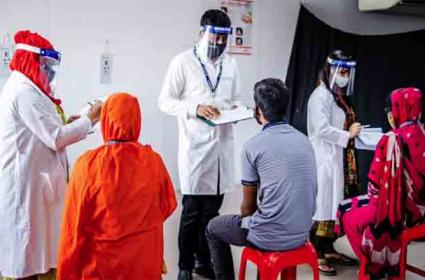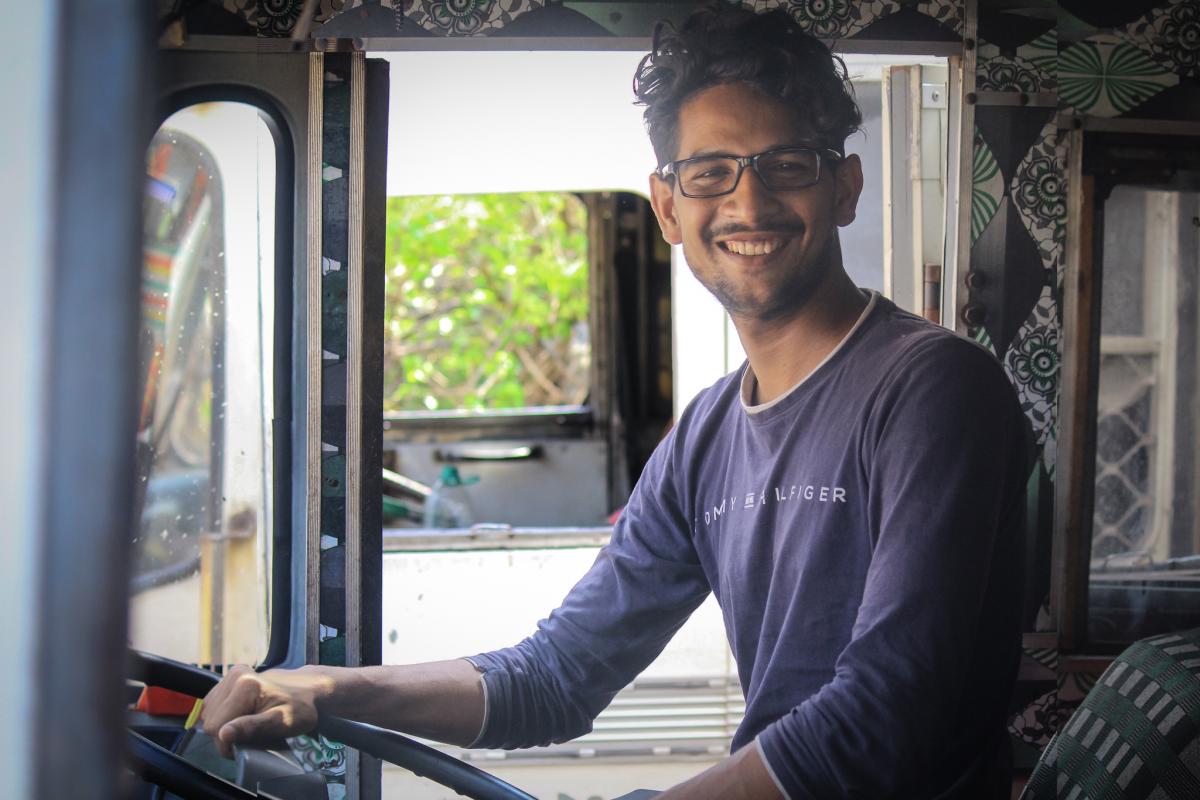More Than 50 Lakh People In India Don’t Have Eyeglasses: VisionSpring CEO

VisionSpring is a pioneering social organisation which makes eyeglasses accessible for the low-income group. In an exclusive interview with Sakshi Post, VisionSpring CEO Ella Gudwin tells Reshmi AR about how her organization's initiatives are creating an impact for the betterment of people at the bottom of the pyramid.

-
Why eyeglasses?
Eyeglasses are a 700-year-old technology, yet there are nearly a billion people around the world who don’t have the eyeglasses they need to earn a living, to learn, and to stay safe on the roads. VisionSpring has been working for twenty years to create access to affordable eyewear, everywhere. And we have been working in India since 2005. -
What kind of vision healthcare gap persists in Indian society?
VisionSpring is focused on the more than 50 lakh Indians who don’t have the eyeglasses they need to see to earn a living, see to learn, and see to be safe on the roadways. Our focus is serving adults and children living on less than Rs. 300 per day. Eyeglasses are a simple and powerful tool for unlocking potential. For example, the PROSPER randomized control trial (2018) conducted with tea pickers in Assam, found that with reading glasses productivity increased by 22% on average, and up to 32% for workers over the age of fifty. -
What kind of initiatives have been taken for the betterment of people?
We have three key programs directly providing vision screenings and eyeglasses to those who need them: See to Learn (partnering with low-income schools), See to Earn (for low-income workers such as weavers and artisans), and See to be Safe (for drivers and transportation workers). -
What kind of inroads have VisionSpring made in India and what are the targets?
More than 50 lakh people in India don’t have the eyeglasses they need to earn, learn, and stay safe. It’s a big problem, one that we can’t solve on our own. We’ve partnered with hundreds of other NGO’s, governmental agencies, and corporations (including sponsorships and CSR programs), and we welcome others to join us. We’re proud to have already provided more than 50 lakh pairs of eyeglasses to low-income Indians who needed them, but we need the support of others to tackle this problem. -
How does VisionSpring operate and generate funds for this kind of initiatives?
VisionSpring is a social entrepreneurship, which means we borrow best practices from the non-profit world (which we call for-purpose) and the for-profit world. We are able to fund our work through donations, grants, corporate partnerships, and bulk sales to mission-aligned private, NGO and government entities. Combining these approaches has helped us accelerate the uptake of eyeglasses beyond what is possible with donations alone. -
What is the impact of eyeglasses on road safety?
Although India has only 1% of the world's vehicles, according to the Ministry of Road Transport and Highways, 13% of the global fatalities from vehicle crashes and other road accidents occur in the country – approximately 400 every day.
With as much as 59% of crashes linked to poor vision, one easy way to reduce the risk of death and injury is to ensure that drivers with vision impairments have eyeglasses so that they can see clearly. -
Why do you think there isn’t a greater emphasis on vision impairment in conversations about road safety?
It’s a problem hiding in plain sight—people don’t notice that eyeglasses are missing from drivers’ noses. Yet 90% of decisions made behind the wheel depend on good vision. There’s a provision in the regulations that drivers must have a sight test for their license, but this is not enforced. And when there’s an accident there isn’t a place on the crash record to note whether or not the driver should be wearing eyeglasses. In addition, some drivers are worried that if they wear glasses, they will reveal a vision impairment resulting in them being dismissed from work.
-
The Ministry of Health has been rightly focused on emergency room care and the Ministry of Roads and Highway Transport has been rightly focused on making intersections safer, vehicle overloading, speeding, etc. But vision requires a collaboration between the two ministries which hasn’t happened yet. And finally, while it is obvious that drivers need eyeglasses and eyeglasses are an affordable and scalable intervention—it is not included in the standard package of road safety interventions because the research connecting vision and crashes is limited to high-income settings where the majority of drivers who need eyeglasses have them. For this reason, VisionSpring is launching the first randomized control trial to study the length between truck drivers’ vision correction and the risk of vehicular crashes.
-
Who are you hoping will join VisionSpring and your partners in providing clear vision to India’s commercial drivers?
This is a problem for everyone who is on the road and shares the road including passengers and pedestrians. We hope to welcome new partners to our efforts including fleet owners, transport agencies, people whose supply chain is heavily dependent on trucking (particularly those in food, beverage, and fast moving consumer goods as well as construction and other manufacturing), police, the Ministry of Roads and Highway Transport, the Ministry of Health, people who conduct defensive driving courses, toll roads, port authorities, break bulk centers, auto manufacturers, passenger vehicle services including ride shares taxis and buses, and more! -
What do you see as the biggest barrier to your work?
Lack of awareness. Vision impairment is unseen and not talked about, but it’s readily solvable. -
What is the impact of corrective eyeglasses on India’s skilled workers (such as artisans and micro-entrepreneurs)?
For those who earn less than Rs. 300 a day, eyeglasses unlock an average of Rs. 16,400 of income earning potential per pair and extend a working-age adult’s income-earning years by decades. This data applies for a wide variety of occupations from weavers to tailors, shopkeepers, teachers, farmers, and many others. There are also significant benefits for quality of life, including reduction of headaches and depression, being able to read your mobile phone, see a grandchild’s face, and enjoy all of life’s beautiful details. -
What are your goals and hopes for the future of VisionSpring’s work?
We hope to join others in creating a Clear Vision India where everybody can see well to do well, and the nation can prosper.

















